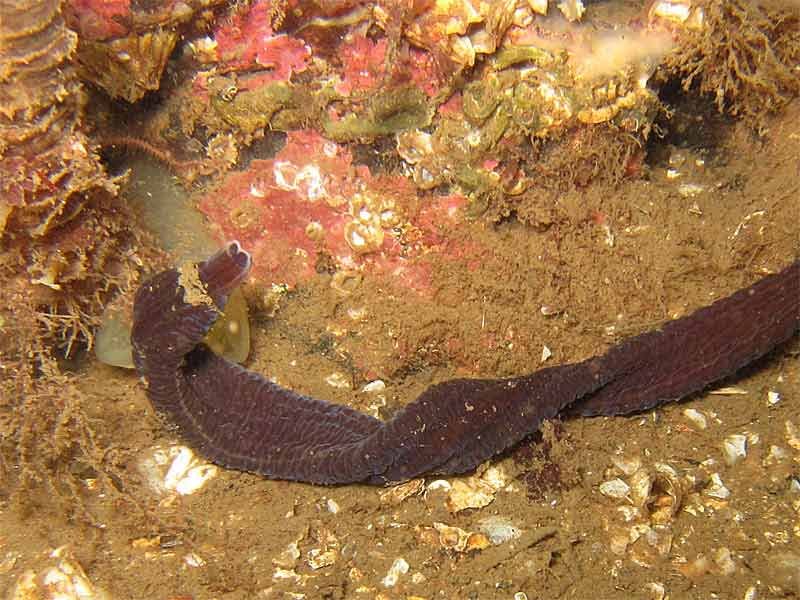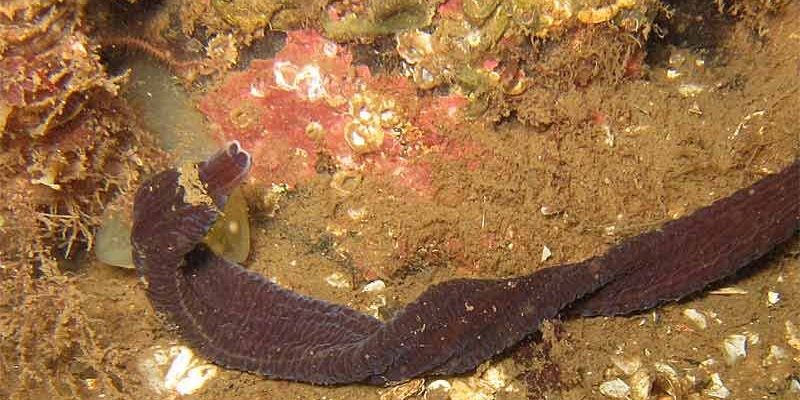
Think of bootlace worms like nature’s underwater spaghetti—thin and flexible, stretching for impressive lengths but often going unnoticed. While they might not have the charisma of a dolphin or the vivid colors of a clownfish, their existence is crucial for understanding marine life and the delicate balance within ecosystems. So, let’s explore why bootlace worms matter in **marine education and interpretation**.
What Are Bootlace Worms?
To start, let’s get to know our slippery friends a bit better. Bootlace worms, belonging to the genus *Lineus*, can be found in many coastal waters, especially in Europe and North America. They can grow to be quite lengthy—a bootlace worm can stretch up to 30 meters! That’s about the same length as a blue whale’s heart!
These worms are notable for their unique ability to regenerate. If they lose a part of their body, they can form new tissues and regenerate. This impressive trait not only makes them a subject of scientific curiosity but also a great teaching tool in marine biology. Imagine how cool it is to explain these worms in a classroom context, discussing topics like regeneration and adaptation in species.
You’ll spot bootlace worms in various habitats, from muddy seabeds to rocky shores. Their presence indicates healthy marine environments, making them essential indicators for researchers studying ocean health.
Bootlace Worms and Marine Ecosystems
Understanding the role of bootlace worms in marine ecosystems is crucial. They are not just solitary creatures; they interact with the environment and other species in surprising ways. These worms serve as a habitat for small creatures, offering shelter and protection as they wiggle through their environment.
Moreover, bootlace worms feed on organic matter, breaking it down into smaller particles. This role in the food web helps recycle nutrients in their habitat, promoting the growth of algae and plankton, supporting larger marine animals in the process. Without bootlace worms, many marine systems might struggle to function properly, highlighting the interconnected nature of life underwater.
This relationship gets even more interesting when you consider the worms’ interactions with predators. Fish and birds sometimes rely on bootlace worms as food, creating a balance in the marine food chain. So, studying these worms doesn’t just give insight into their life; it helps understand larger ocean dynamics.
Educational Value of Bootlace Worms
In education, bootlace worms are fantastic tools for illustrating complex biological concepts. They’re often used in classrooms to discuss topics like *regeneration*, *adaptation*, and *ecosystem dynamics*. By studying these worms, students can see real-world applications of their lessons in biology.
Imagine a class project where students observe bootlace worms in action. They can conduct experiments to see how these worms react to different environmental conditions or even collaborate with local aquariums. Such hands-on activities can ignite curiosity and foster a love for marine life.
Plus, discussing the unique traits of bootlace worms can lead to broader conversations about ocean conservation and the importance of protecting marine habitats. By understanding the significance of each creature, including the not-so-glamorous bootlace worm, students can become more conscientious about their environment.
Challenges in Understanding Bootlace Worms
Here’s the thing—bootlace worms face various challenges, from pollution to habitat destruction, impacting their populations. Unfortunately, these factors often go unnoticed because these worms are rarely in the spotlight. When discussing marine education, it’s crucial to address how these external factors affect not just bootlace worms but the entire ecosystem.
For example, researchers have noted that coastal development can lead to the loss of vital habitats like seagrass beds and rocky outcrops—places where bootlace worms thrive. This diminishes not only their survival but also that of other marine creatures that rely on similar environments. It’s a ripple effect that can lead to disturbed ecosystems.
Moreover, climate change poses threats to marine environments. Changes in temperature, salinity, and water quality directly affect the habitats of bootlace worms. Understanding these challenges can foster a sense of responsibility and action among students, empowering them to advocate for marine conservation.
Bootlace Worms in Marine Interpretation
Interpreting the role of bootlace worms in marine settings can significantly enhance visitor experiences at aquariums and marine parks. Staff can create engaging exhibits that showcase these worms along with other marine life. Imagine an interactive display where visitors can learn about the habits, habitats, and vital importance of bootlace worms.
The interpretive aspect can make science feel more relatable and accessible to the public. Programs that involve hands-on learning, such as guided tide pool exploration, can spark curiosity and deepen connections between visitors and the marine life they encounter. This approach transforms the visit into an engaging educational experience.
Furthermore, public talks about the significance of seemingly small creatures like bootlace worms can inspire awareness. When people understand that every creature plays a role in the ecosystem, they are more likely to take action to protect these environments.
Promoting Bootlace Worm Awareness
Promoting awareness of bootlace worms isn’t just about marine education; it’s about cultivating a holistic understanding of marine biodiversity. Schools, aquariums, and conservation organizations can all play a part in amplifying the message.
One effective method could be through storytelling—sharing tales and facts about bootlace worms in newsletters, social media, and community events. Think of how highlighting a bootlace worm’s journey through various challenges (like pollution or habitat loss) could resonate with readers. This storytelling approach could make science more relatable and evoke empathy.
Additionally, community-based initiatives, such as beach cleanups or restoration projects, can tie back to the importance of bootlace worms and other marine life. Engaging the public encourages people to see beyond the more celebrated marine creatures and appreciate the interconnected web of life beneath the waves.
Bootlace worms might not be the most glamorous creatures of the ocean, but they play a crucial role in marine environments and education. By studying and sharing their significance, we can deepen our understanding of ecosystems and inspire future generations to care for our oceans.
Through engaging educational experiences, we can turn marine biology lessons into exciting adventures. Whether it’s through interactive exhibits, classroom discussions, or community engagement, bootlace worms can help highlight the importance of every creature in the ocean. So next time you think of the wonders of the sea, don’t forget the bootlace worm—nature’s unsung hero in maintaining the balance of marine life.

